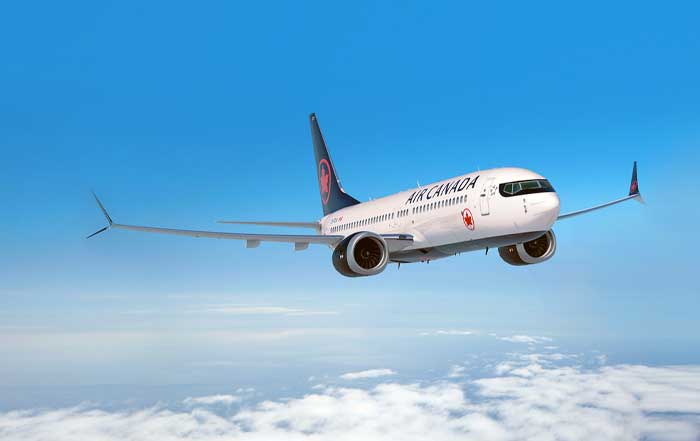In a world increasingly characterized by geopolitical manufactured unnatural tensions, economic disparities, and digital echo chambers, the ability of humanity to connect beyond borders has become both a challenge and a necessity. Art, music, and sports—three pillars of cultural expression—have repeatedly demonstrated their power to transcend language, politics, and social barriers. These creative and physical manifestations of the human spirit continue to foster unity where governments, institutions, and algorithms often fall short. They offer a universal language through which people across continents can communicate empathy, creativity, and shared identity, helping bridge divides that otherwise appear insurmountable.
As the pace of globalization evolves and new technologies reshape the cultural landscape, the intersection of artistic expression, musical innovation, and global sporting events offers both opportunities and responsibilities. The collective energy found in a symphony hall, a bustling art exhibition, or a packed football stadium symbolizes humanity’s ongoing dialogue—a reminder that, beyond borders, our similarities are far more significant than our differences.
For readers exploring global culture and connection through World’s Door, this journey through the worlds of art, music, and sport serves as a window into how creativity continues to build bridges between communities, nations, and generations.
The Universal Language of Art
Throughout history, art has functioned as a silent yet powerful medium for understanding across civilizations. Whether in the form of Renaissance masterpieces in Italy, the geometric precision of Islamic calligraphy, or the abstract dynamism of modern digital art, visual expression transcends linguistic limitations. It tells stories that words cannot, offering a shared visual vocabulary that invites reflection and empathy.
In contemporary society, art exhibitions have become more than aesthetic gatherings—they serve as diplomatic exchanges and cultural touchstones. Institutions like The Louvre, The British Museum, and The Museum of Modern Art (MoMA) have expanded their reach through global collaborations, virtual reality exhibits, and community programs that connect artists from diverse backgrounds. Learn more about how art influences global culture and shapes cross-border understanding.
Digital technology has also democratized artistic exchange. Platforms such as Google Arts & Culture and blockchain-based galleries are allowing artists from remote regions of Africa, Asia, and Latin America to present their work to a global audience. This decentralization of visibility challenges traditional hierarchies in the art world, creating space for underrepresented voices. For instance, initiatives like Art Basel’s Global South projects highlight how emerging artists reinterpret local heritage within global narratives, bringing unique regional perspectives to international attention.
Art also plays a significant role in healing. In post-conflict societies or communities recovering from social unrest, public murals and collaborative art installations often become symbols of reconciliation. Cities like Belfast, Sarajevo, and Johannesburg have witnessed firsthand how visual storytelling can help mend divided societies. The creation of shared cultural spaces, both physical and digital, allows citizens to reclaim identity and agency while fostering intergroup dialogue.
The sustainability dimension of art further underscores its universal relevance. The growing movement toward sustainable creativity and environmental responsibility in the arts encourages artists to adopt eco-friendly materials, raise awareness of climate change, and participate in projects that advocate for conservation. From biodegradable sculptures to ocean-cleanup art installations, art continues to serve as a voice for the planet, echoing a collective call for coexistence.
🌍 Cultural Bridges: Connecting Humanity
Explore how Art, Music & Sports unite the world beyond borders
🌟 Global Impact Metrics (2025)
Music as a Bridge Between Worlds
If art provides the imagery of unity, music provides its heartbeat. Across every known culture, music functions as an emotional conduit that dissolves barriers of language, ideology, and geography. The shared rhythms of a festival in Rio, the resonance of a choir in London, or the syncopation of African drums all connect humanity through vibration and emotion.
In the 21st century, technology has expanded music’s reach exponentially. Platforms such as Spotify, Apple Music, and YouTube have given rise to global collaborations where artists from diverse cultural traditions can merge sounds in unprecedented ways. The rise of “world fusion” genres and cross-continental collaborations—like those between BTS and Western pop icons, or between African Afrobeats producers and American hip-hop artists—illustrates how music transcends both borders and cultural preconceptions. Learn more about how innovation shapes cultural evolution.
Music diplomacy has also emerged as a significant force in international relations. Initiatives like the Playing for Change Foundation and UNESCO’s International Jazz Day demonstrate how melodies can function as cultural ambassadors. When artists from opposing nations perform together, their harmony becomes a metaphor for peaceful coexistence. This soft power dynamic underscores that unity can often be achieved through shared rhythm long before it is achieved through political negotiation.
Moreover, festivals such as Glastonbury, Coachella, and Tomorrowland have transformed into cultural melting pots where audiences from over 100 countries converge to celebrate creative expression. These global gatherings reflect how music festivals function as modern equivalents of ancient rituals—spaces where humanity gathers to reaffirm its shared emotional core. Visitors experience not just performances, but collective energy that reminds them of the human capacity for empathy and joy.
The therapeutic dimension of music is equally profound. From ancient healing chants to modern music therapy programs in hospitals, sound continues to play a crucial role in human wellbeing. In refugee camps, conflict zones, and hospitals worldwide, music-based initiatives have been used to restore a sense of normalcy and hope. For readers interested in the intersection of music and wellness, explore the health dimension of cultural expression.
As global music streaming continues to expand, new challenges have arisen around fair compensation, cultural appropriation, and digital rights. Yet within these debates lies an opportunity for global cultural reform—one that values authenticity and diversity over algorithmic predictability. The future of global music may depend less on who controls distribution platforms and more on who can preserve the integrity of sound as a universal language.
Sports: The Arena of Global Unity
Few human activities possess the unifying power of sports. From the Olympic Games to the FIFA World Cup, sporting events offer humanity’s most consistent and visible demonstrations of global cooperation. They transcend ideology, religion, and race, bringing people together under a shared banner of fair play, perseverance, and mutual respect.
The Olympic ideal, as envisioned by Pierre de Coubertin, continues to thrive in the modern era. The International Olympic Committee (IOC) emphasizes values of excellence, friendship, and respect—principles that remain relevant amid global polarization. The 2024 Paris Olympics, for example, highlighted sustainability, inclusivity, and gender equality as central themes, underscoring sports’ evolving role in advancing social progress. Discover how these values align with the broader themes of global society.
Sports diplomacy has long functioned as an informal yet powerful channel of international engagement. The “Ping-Pong diplomacy” between China and the United States in the 1970s, the Unified Korean Olympic Team, and the joint football initiatives in conflict zones demonstrate how games can do what politics often cannot—bring adversaries to the same field, bound by mutual respect. In 2025, this spirit continues through organizations like Peace and Sport, which uses athletics to build dialogue and reconciliation in regions affected by war.
At the community level, local sports programs play an equally vital role in fostering inclusion. In immigrant neighborhoods across Europe and North America, youth sports leagues help newcomers integrate, build friendships, and develop cultural fluency. Whether it is football in Berlin, cricket in London, or basketball in Toronto, these grassroots initiatives strengthen civic bonds and mutual understanding.
Environmental responsibility has also entered the sporting arena. Major leagues and federations are rethinking infrastructure, logistics, and event management to reduce carbon footprints. Learn more about how sustainability influences global industries. Stadiums powered by renewable energy, recyclable uniforms, and green transportation initiatives now symbolize a new generation of conscious athletes and fans who understand that unity with the planet is as vital as unity among nations.
The Digital Age and the Transformation of Cultural Exchange
The 21st century’s digital revolution has transformed the way art, music, and sports are created, shared, and experienced. What once required travel, diplomacy, and physical gathering can now happen instantly in digital spaces. In 2025, global connectivity has made it possible for people from any corner of the world to engage in collective creativity. Yet this democratization also brings with it the need for new ethics, responsibilities, and structures of understanding.
Social media, online streaming, and the rise of virtual communities have allowed a young painter in Lagos, a dancer in Seoul, or a gamer in São Paulo to reach audiences that would have been unimaginable a decade ago. Platforms such as Instagram, TikTok, and Twitch have redefined cultural visibility, allowing creators to bypass traditional gatekeepers. What was once curated by institutions is now co-created by millions. This has accelerated cultural hybridization—where genres, aesthetics, and traditions merge, resulting in forms of expression that are more diverse than ever before.
However, digital exposure also poses the challenge of maintaining cultural authenticity. In an era of algorithmic trends, artistic originality risks being diluted by viral conformity. As more creators enter the global arena, safeguarding cultural heritage and intellectual property has become a pressing issue. Organizations such as UNESCO and WIPO (World Intellectual Property Organization) are taking active steps to protect indigenous and traditional forms of expression while encouraging digital innovation. Readers can learn more about the evolving ethical implications of creativity on World’s Door’s ethics page.
The rise of immersive technologies—such as virtual reality (VR) and augmented reality (AR)—has further blurred the boundaries between cultures. Global events like art biennales and music festivals are now offering VR experiences, enabling virtual attendance from across the globe. This has expanded cultural accessibility, making art and music more inclusive for those unable to travel physically. Simultaneously, digital sports such as eSports have created new frontiers of competition and collaboration, where players from Tokyo, Madrid, and Johannesburg compete side by side in real time.
As digital globalization evolves, it also reinforces the importance of cross-cultural literacy. Understanding the nuances of another community’s values, traditions, and forms of expression has become vital in a connected world. Educational initiatives that merge arts, music, and sports into digital learning environments are helping shape a generation that values empathy over isolation. For readers interested in exploring how this integration is shaping future societies, visit World’s Door’s education section.
Cultural Diplomacy in the Modern World
The use of art, music, and sports as tools of diplomacy is not a new phenomenon, but it has taken on renewed importance in a world facing ideological fragmentation. Cultural diplomacy functions as a soft-power strategy that builds trust where political or economic negotiations often stall.
Governments and international organizations have increasingly embraced creative diplomacy as a cornerstone of global engagement. Programs such as Fulbright, British Council’s Creative Europe, and Goethe-Institut’s cultural exchange initiatives have long promoted the idea that dialogue through art and education can create lasting peace. Similarly, China’s Belt and Road cultural programs and Japan’s Cool Japan initiative demonstrate how nations strategically use cultural export to shape global perceptions.
Music diplomacy, too, remains central to this effort. The United States State Department’s American Music Abroad program and the European Union’s Music Moves Europe platform both highlight how songs can convey shared values of freedom, equality, and collaboration. By touring artists across continents, these initiatives transform stages into bridges, amplifying the message that humanity shares a common rhythm.
Sports diplomacy has likewise taken on global relevance. Events like the FIFA World Cup, the Rugby World Cup, and the Olympic Games are arenas where geopolitical rivalries often give way to mutual admiration. In many cases, friendly competitions have served as first steps toward normalization of strained relations between nations. The International Olympic Committee continues to emphasize inclusion and environmental responsibility in event planning, echoing broader commitments to global unity and sustainability.
In 2025, as global tensions around trade, technology, and migration persist, cultural diplomacy through creative exchange offers a model for coexistence. It demonstrates that the arts, rather than being peripheral to politics, are central to shaping a peaceful global order. To explore related themes of global engagement and understanding, visit World’s Door’s world section.
Education and Intercultural Competence
Education remains one of the most powerful instruments for fostering empathy and appreciation across cultural boundaries. When art, music, and sports are integrated into learning environments, they nurture qualities that traditional academic subjects cannot—collaboration, creativity, and emotional intelligence.
Across continents, schools and universities are revising curricula to include cultural literacy and creative expression. In Finland, for example, interdisciplinary education encourages students to combine art, design, and environmental science. In Singapore, public programs incorporate sports and music into academic evaluation, promoting a holistic view of learning that values both mind and body. The United Nations Educational, Scientific and Cultural Organization (UNESCO) continues to emphasize the role of creative education in its Sustainable Development Goals, particularly Goal 4, which promotes inclusive and equitable quality education.
Cultural immersion programs, global student exchanges, and digital collaborations between classrooms are fostering a sense of shared humanity among young people. Music ensembles composed of students from different nations, or joint art projects tackling global issues such as climate change and poverty, illustrate how creativity nurtures responsibility and awareness. Learn more about education’s evolving relationship with culture and creativity.
Furthermore, institutions are using art and sports to challenge inequality and empower marginalized groups. In refugee education programs across Europe and the Middle East, art and athletic initiatives have become vehicles for trauma recovery and community building. These experiences teach young people the value of resilience, cooperation, and empathy—skills that extend far beyond the classroom.
Sustainability and the Cultural Economy
As global awareness of environmental and social responsibility deepens, the intersection between sustainability and culture has emerged as a key concern. Artists, musicians, and sports organizations are increasingly aware that the health of the planet is inseparable from cultural vitality.
Cultural festivals and events are now adopting green practices—using solar-powered stages, reducing plastic waste, and promoting carbon-neutral travel options. Major festivals such as Glastonbury and Roskilde have taken leadership roles in eco-conscious event management. Similarly, sports federations like FIFA and Formula E have integrated environmental metrics into their operations, demonstrating that entertainment and sustainability can coexist. Readers can learn more about this growing alignment between sustainability and global culture on World’s Door’s sustainable section.
Artists are also leading environmental movements through creative activism. Painters, sculptors, and digital creators are using their platforms to draw attention to deforestation, pollution, and biodiversity loss. Environmental art installations in cities such as Paris, Sydney, and Seoul blend public engagement with advocacy, reminding audiences that beauty and responsibility must evolve together.
Music festivals, too, have embraced eco-consciousness by encouraging local sourcing, green transport, and renewable energy. Initiatives like A Greener Festival and Reverb partner with touring musicians to reduce emissions, reflecting a global shift toward ethical cultural production. As music and art industries adapt, they also create economic opportunities within the growing green economy, stimulating innovation in materials, event logistics, and sustainable design.
The same principle applies to sports infrastructure. The construction of sustainable stadiums—such as the Allianz Arena in Munich and SoFi Stadium in Los Angeles—demonstrates how technology and sustainability converge in modern sports architecture. The fusion of creative design, environmental engineering, and social awareness is shaping the future of global entertainment. Explore further at World’s Door’s technology page.
Art, Music, and Sports as Tools for Social Healing
Beyond their aesthetic and entertainment value, art, music, and sports possess therapeutic qualities that support mental health and community resilience. In a world recovering from pandemics, economic stress, and social division, these cultural expressions offer pathways to collective healing.
Art therapy programs in hospitals and rehabilitation centers are helping patients cope with trauma and loss. Music therapy continues to gain recognition for its neurological and emotional benefits, particularly for individuals with autism, depression, or Alzheimer’s disease. Similarly, adaptive sports initiatives—such as the Paralympic Games and Special Olympics—celebrate human strength beyond physical limitations, reinforcing the principle that inclusion is not an exception but a standard. Learn more about the intersection between culture, healing, and wellbeing on World’s Door’s health page.
In regions affected by war or displacement, creative and athletic initiatives are vital components of recovery. Programs led by organizations such as Save the Children, UNHCR, and Doctors Without Borders often include music and art workshops for children as a way to restore normalcy. These efforts go beyond therapy—they foster dignity, connection, and hope.
Public art installations dedicated to remembrance and reconciliation, such as the murals in Northern Ireland or the genocide memorials in Rwanda, reveal how creativity can help societies process painful histories. Music concerts held in former conflict zones have also served as symbolic gestures of renewal. In these instances, the shared experience of rhythm, color, and motion becomes a universal language of peace.
The Economic Dimension of Cultural Exchange
The global economy of art, music, and sports is not only a driver of creativity but a significant contributor to employment, tourism, and innovation. According to projections by UNCTAD and UNESCO, the cultural and creative industries collectively account for over six percent of global GDP in 2025, employing hundreds of millions of people worldwide. Yet beyond revenue, their deeper value lies in fostering cooperation across nations and promoting inclusive growth.
Art markets and museums have become integral to international tourism. Cities like Paris, New York, and Florence continue to attract millions through cultural heritage, while emerging creative hubs in Nairobi, Seoul, and São Paulo are reimagining the global art economy. Investments in public art programs and digital curation platforms have opened opportunities for artists to monetize their work without intermediaries. The growing use of blockchain authentication systems in art sales ensures transparency and trust, reducing fraud while empowering artists to retain creative ownership.
Music’s global economic impact has also surged. Streaming has expanded the industry’s reach, but live performances remain a cornerstone of international collaboration. Festivals generate billions in local economic activity through travel, accommodation, and small business engagement. In cities like Austin, Berlin, and Seoul, creative districts thrive as economic ecosystems powered by artistic exchange. To understand the interplay between culture and commerce in greater depth, explore World’s Door’s business insights.
The sports industry, too, has evolved into one of the world’s most powerful economic forces, valued at nearly a trillion dollars annually. Mega-events such as the Olympic Games, FIFA World Cup, and Formula One Grand Prix not only generate revenue but also foster international cooperation in infrastructure, logistics, and tourism. Furthermore, smaller community-driven sports programs are yielding tangible economic and social returns by revitalizing neighborhoods, creating jobs, and strengthening local identities.
As nations recognize the potential of the cultural economy, they increasingly invest in creative infrastructure—museums, music conservatories, training academies, and sports facilities—as engines of growth. These investments transcend entertainment; they reflect a belief that culture and economy are mutually reinforcing. The creative economy is no longer a peripheral sector—it is a central pillar of sustainable development and diplomacy.
Global Collaborations and the Spirit of Co-Creation
True cultural progress often emerges not from isolated achievement but from collaboration. Art, music, and sports are most powerful when they unite individuals across boundaries of nationality, language, and belief. In 2025, the concept of co-creation defines the global cultural moment, emphasizing participation and partnership over competition and ownership.
Collaborative art projects—such as cross-border mural exchanges, international art residencies, and global exhibitions like the Venice Biennale—demonstrate that creativity is amplified through dialogue. Artists who share perspectives from different continents are not only painting canvases but rewriting narratives of unity.
Music’s collaborative nature is even more pronounced. The rise of global music collectives—like the Playing for Change Band and the OneBeat fellowship—shows that artists from diverse regions can blend instruments, languages, and genres into harmonious compositions. Technology enables remote co-creation, allowing musicians separated by oceans to compose together in real time. For more on how creativity thrives through cooperation, visit World’s Door’s culture section.
In sports, collaboration takes shape through international leagues, mixed-nationality teams, and cross-border training programs. Global academies like Right to Play, PeacePlayers International, and Laureus Sport for Good use teamwork and shared goals to dissolve prejudice. When athletes from different backgrounds unite for a common cause, they model the principles of respect and solidarity that societies aspire to.
Cultural partnerships are also extending into corporate responsibility. Companies increasingly collaborate with artists and athletes to promote social causes such as gender equality, education, and environmental awareness. Corporate sponsorship of cultural diplomacy projects reflects an understanding that social trust, built through shared values, is the most durable form of brand equity. Learn more about how global business ethics intersect with culture and responsibility.
Technology, Innovation, and the Future of Global Connectivity
The cultural world of 2025 is inseparable from technological advancement. Digital innovation has not only transformed how art, music, and sports are consumed but has also reshaped how they are produced and experienced. Artificial intelligence, virtual reality, and data analytics now serve as creative collaborators, not just tools.
In art, AI-generated works challenge the definition of authorship while offering new forms of expression. Platforms such as DeepDream and DALL-E allow artists to visualize abstract ideas beyond traditional human constraints. This evolution provokes philosophical questions: Can creativity exist without consciousness? Can a machine understand cultural nuance? These debates are redefining aesthetics and ethics in equal measure. Readers may explore similar discussions on World’s Door’s technology page.
Music, too, has entered an era of technological fusion. AI-driven mastering, adaptive streaming, and generative composition platforms have expanded sonic possibilities. Yet rather than replacing human musicians, these tools are amplifying collaboration. Artists now integrate biometric feedback, 3D sound, and environmental data into performances, turning concerts into immersive multisensory experiences that connect audience and performer on a deeper level.
In sports, data analytics and wearable technology have revolutionized training, performance optimization, and injury prevention. From smart stadiums to real-time fan engagement platforms, technology enhances accessibility and inclusion. Innovations such as virtual reality training and AI-assisted coaching democratize expertise, allowing athletes from underrepresented regions to compete globally.
Innovation has also made culture more inclusive. Virtual museums, online concerts, and metaverse-based tournaments have enabled participation for those previously excluded by geography or cost. Digital twins of cultural heritage sites preserve endangered monuments, ensuring that future generations can explore them virtually. Through such tools, technology becomes an ally of preservation and inclusion rather than a force of alienation.
For a deeper dive into how innovation fuels cultural evolution, visit World’s Door’s innovation section.
The Shared Future of Cultural Unity
As humanity progresses further into an interconnected age, the challenge is not merely to share content but to cultivate understanding. Art, music, and sports remind the world that emotional intelligence and creativity are as essential to progress as economics or technology. In an era defined by artificial intelligence and global migration, the preservation of human empathy has become an act of resistance against fragmentation.
The next decade will see greater convergence between creative disciplines and social transformation. Art will continue to drive activism; music will shape identity and emotional solidarity; and sports will remain a model of fair competition and mutual respect. Together, they form the emotional infrastructure of globalization—a network of shared experiences that sustains peace and belonging.
International organizations are increasingly recognizing this synthesis. UNESCO’s World Forum on Culture and Technology, The United Nations Alliance of Civilizations, and World Economic Forum’s Global Creative Economy Council are fostering cross-sector partnerships that align cultural progress with sustainable development. These collaborations aim to ensure that globalization benefits all communities, not just a privileged few.
At a local level, the same philosophy echoes through community-driven initiatives—from youth orchestras in Venezuela’s El Sistema movement to mural collectives in Cape Town and indigenous film festivals in Canada. These endeavors remind us that culture is not a luxury—it is a lifeline that connects individuals to their heritage, neighbors, and the wider human story.
The call for unity through culture is not idealistic; it is pragmatic. In an era of environmental crises, political division, and digital isolation, shared experiences in art, music, and sports offer solutions that data and policy alone cannot. They cultivate the emotional bonds necessary for cooperation and resilience. As audiences gather in galleries, stadiums, and digital worlds, they reaffirm what humanity has always known: that beauty, rhythm, and motion belong to everyone.
The power of art to inspire reflection, the rhythm of music to synchronize hearts, and the spirit of sportsmanship to unite communities remain timeless forces. Together, they build the invisible bridges that connect continents, generations, and beliefs—bridges that carry the world closer to empathy, equity, and peace.
For readers who wish to explore how culture continues to shape global understanding and transformation, visit World’s Door’s lifestyle page and World’s Door’s world section for ongoing stories of human connection, creativity, and shared progress.
Conclusion
In the grand narrative of civilization, art, music, and sports are not mere pastimes but the soul of collective identity. They hold the power to heal divisions, inspire innovation, and affirm our interconnectedness. As borders shift and technologies evolve, these universal expressions will remain humanity’s most enduring dialogue—an eternal conversation reminding us that beyond politics and commerce, what unites us is infinitely greater than what divides us.
Through their shared rhythms, colors, and competitions, they illuminate a truth that defines both history and hope: that unity is not achieved through uniformity, but through the harmony of difference.
In 2025 and beyond, as readers of WorldsDoor.com explore the intersections of health, culture, business, technology, environment, and innovation, one message endures—human creativity remains the bridge that keeps the world connected.










